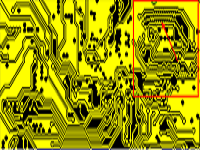Estimation of the PCB Production Process Using a Neural Network
DOI:
https://doi.org/10.46604/peti.2020.4265Keywords:
printed circuit board (PCB), neural network, Gerber file, production scheduleAbstract
Printed Circuit Boards (PCB) are an integral part of all electronic products, and the production process for printed circuit boards is quite complex. As the life cycle of electronic products becomes shorter and shorter, and the precision and signal bandwidth of electronic products become higher and higher, the manufacturing process of printed circuit boards is further complicated. Therefore, how to pre-evaluate the production difficulty before starting the production will effectively increase the efficiency and quality of printed circuit board production.
Gerber file is the most commonly used data format for the printed circuit board industry. This file contains most of the parameters required for the manufacture of printed circuit boards. Therefore, this study uses a neural network to evaluate new PCB products before they are produced through the production parameters that are more influential in the PCB manufacturing process. This makes it possible to evaluate the difficulty and the required production process before the new PCB product is produced. This will be very beneficial for the PCB production schedule, quality control, and cost.
References
D. H. A. Janan and T. K. Liu, “The optimization of CNC PCB drilling using hybrid taguchi genetic algorithm,” Kybernetes, vol. 45, no. 1, pp. 107-125, 2016.
C. J. Lin and M. L. Huang, “Modified artificial bee colony algorithm for scheduling optimization for printed circuit board production,” Journal of Manufacturing Systems, vol. 44, pp. 1-11, July 2017.
N. Dave, V. Tambade, B. Pandhare, and S. Saurav, “PCB defect detection using image processing and embedded system,” International Research Journal of Engineering and Technology, vol. 3, no. 5, pp. 897-1901, 2016.
V. Raghuvanshi, A. Burman, P. P. Bartakke, and S. Deshpande, “PCB solder pad inspection mechanism using gerber file,” 2016 International Conference on Communication and Signal Processing (ICCSP), IEEE, April 2016.
“Gerber Formats,” https://www.ucamco.com/en/guest/downloads, February 8, 2019.
“Gerber Translator,” http://literature.cdn.keysight.com/litweb/pdf/ads2008/trans/ads2008/Gerber_Translator.html,
March 26, 2019.
“An Intuitive Explanation of Convolutional Neural Networks,” https://ujjwalkarn.me/2016/08/11/intuitive-explanation-convnets/, March 26, 2019.
“Convolutional Networks,” http://cs231n.github.io/convolutional-networks/, March 26, 2019.
“Gerber View,” https://sourceforge.net/projects/gerberview/, March 2, 2019.
“EMGU CV,” http://www.emgu.com/wiki/index.php/Main_Page, January 8, 2019.

Published
How to Cite
Issue
Section
License
Submission of a manuscript implies: that the work described has not been published before that it is not under consideration for publication elsewhere; that if and when the manuscript is accepted for publication. Authors can retain copyright of their article with no restrictions. Also, author can post the final, peer-reviewed manuscript version (postprint) to any repository or website.

Since Oct. 01, 2015, PETI will publish new articles with Creative Commons Attribution Non-Commercial License, under The Creative Commons Attribution Non-Commercial 4.0 International (CC BY-NC 4.0) License.
The Creative Commons Attribution Non-Commercial (CC-BY-NC) License permits use, distribution and reproduction in any medium, provided the original work is properly cited and is not used for commercial purposes








